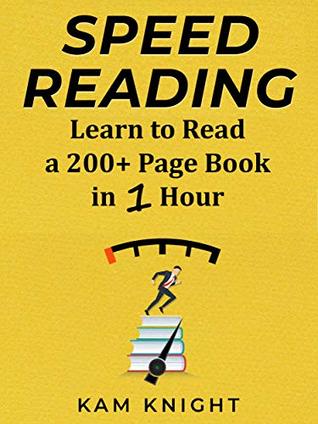More on this book
Community
Kindle Notes & Highlights
by
Kam Knight
Read between
December 14 - December 19, 2022
Therefore, whenever you pick up something to read, state the purpose or intention for reading it. The clearer the purpose, the easier it will be for the mind to grasp the information—and the faster you can sift through it.
Preview is one of the most valuable steps readers can take to improve reading speed and comprehension.
the mind makes predictions from a series of clues.
The benefit of predicting what comes next is that you can read faster.
Preview helps the mind make more accurate predictions.
adjust reading speed according to the importance, form, genre, and difficulty of the material.
Space Reading directs you to avoid looking at the words you are reading, but rather at the spaces in between the words.
spaces between every 3-4 words,
As a result, the eyes can pick up more information, just as when they look at someone’s face.
innate ability
Chunking opens our line of sight to capture more words in a single glance. The eyes are not set on a single word of a sentence, but instead, on a block or “chunk” of words in that sentence. You look at a chunk, move to another chunk, then another, and so on.
The key to this technique is not to grab words at random but to grab combinations that form a phrase.
Space Reading and chunking. Both work on the principle of softening the eye’s gaze and picking up multiple words in a single glance.
Although both work on the same principle, they function independently of one another. That is, they can’t necessarily be used together because it is difficult to effectively look at a space and chunk at the same time. When reading, you will either look at spaces or at chunks of words, but not both.
tame the desire to subvocalize.
To increase reading speed and comprehension, it makes sense then to manage eye fixation.
First, by reducing the number of words you fixate on. Second, by decreasing the length you hold each fixation.
regression is the act of reading the same text multiple times.
Regression also stems from a lack of focus.
Avoiding Regression
purpose helps direct attention and focus.
Stop Subvocalizing
Visual range is the ability to see objects beyond your direct line of sight.
single glance.
use of peripheral vision,
First, the brain processes information from the sides 25 percent faster than it does from direct vision, which is why the brain is able to react to dangers so quickly.
Employing the Shultz table is a great way to train and expand vision. Practice using the tables until you can comfortably see the outer numbers with your peripheral.
use soft focus
Once you are Space Reading or chunking every 4 to 5 words while limiting subvocalization, fixation, and regression, advance to 5 to 6 words.
To improve comprehension, pay attention to the main points or the big picture, so to speak, and the broader context.
stronger the vocabulary,
the quicker we read.
recall and review. If reading a story or novel, think about the events
With non-fiction, use the suggestions in the previous section about main points and topic sentences.
mind discards 80 percent of what is read, sometimes within minutes or even seconds of reading it. That’s why the recall and review exercise is so vital.
it will work harder to remember it.
promotes focus.
Since we’re not able to eliminate daydreaming completely, the best thing we can do is learn to manage it through visualization. Visualization is the act of forming images in your mind.


